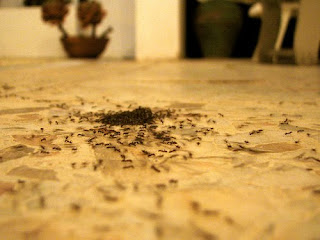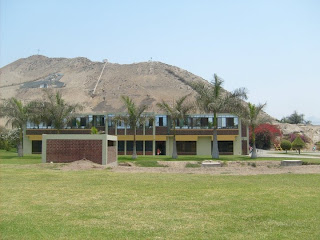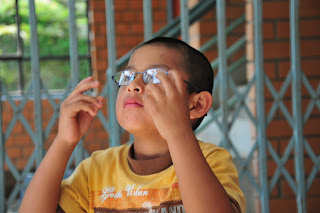The last two weeks (has it been two weeks?! Sorry..) have been absolutely crazy. Because of this, I'll just be updating on our eye mission that we had a week ago. Unfortunately, the pictures I'm posting aren't mine (so they're not as awesome as they could be ;) ) because my camera is currently out of commission (it got filled with sand when I was sandboarding last week.. more on that to come next post). At the moment, I'm writing from my bed, where I've spent the last 3 days (59 hours so far, not that I'm counting, or going crazy, or anything), trying to kick a stubborn tummy bug's butt with amoxicillin.
So anyway, eye mission. To summarize it all, it was an emotional rollercoaster, complete with a few bumps here and there. The volunteersr from the states came on Saturday night--a group of almost 30 people from Minnesota and Wisconsin, ranging in age from seniors in high school and college kids upto 68-year-old retirees traveling outside the country for the first time. The way the mission works is that ahead of time, a bunch of tickets (enough for 600 per full day of work) had been given out to residents of the really poor (if you've ever been out of the country and seen another country's "poor," imagine that times a few) areas of Lima. Each ticket has a day and either "morning" or "afternoon" on it, so we're supposed to get 300 people each part of the day, which should give us enough time to eat lunch and be able to take a bathroom break without totally backing things up, right? Right. Jess and I figured out, though, that the people at the gate had been letting in hundreds of extra people without tickets, so we ended up with a few VERY long 12-hour days..
So on Sunday, we set up in the morning and got ready to start seeing people in the afternoon. Throughout the main building of the orphanage we set up stations. Once people made it in the front gate, they'd wait outside under a tent and get their basic eye history and address if they had one (most of the time it would just say "Lurin," the town most of these people were from) written down on a card they'd bring with them to every station inside. Once someone got inside, they would first wait to read some eye charts, then go to the autorefractor room, then to my room, which is where most of the eye doctors were, to get their final prescription. Finally one of the kids at the orphanage would usher them down to the dining room, where we had thousands and thousands of donated glasses, to test out a few based on their prescription. It was an unbelievably long process for these people--those that were coming in the morning would be lined up outside the gate at 6am (we didn't start seeing people until 8:30 most days), then they'd wait in the hot sun for half of the morning, and then spend hours inside waiting between stations. And some of these people that came were so old or so blind that they couldn't walk, or mothers with a bunch of young children, so as hard as it felt for me to be standing on my feet for 12 hours each day, I can't imagine what it was like for all of them to come so far to wait and wait.. and wait..
None of the doctors or volunteers handing out the glasses really spoke Spanish, so we needed a bunch of interpreters, which we ended up getting from one of the universities in Lima. This ended up being really neat, because apparently in the past (this mission has been going on for 10 years), there have never been enough interpreters, so three doctors would be sharing one interpreter, if you can imagine how slow that might be. I was interpreting and also in charge of that back room, so it was fun meeting a bunch of kids my age and bonding over the interpreting experience (none of us knew a whole lot of technical/medical words in the other language, so we'd help each other figure them out). One of my favorite parts of this whole interpretation aspect is that often, and English-Spanish/Spanish-English interpreter wasn't enough. Quite a few times, people came in that were Quechua (indigenous people from this area, Bolivia, northern Argentina..) and didn't know enough Spanish (if any) to communicate with us. So I learned quickly that one of our staudents that had just graduated from the orphanage spoke Quechua, and he'd come over when we needed him, and we'd set up an interpretation line of Quechua-Spanish, Spanish-English, and then back again. Which of course, being the language nerd that I am, I totally geeked out over. :)
Apparently, all in all, things went a lot more smoothly than they've ever gone in the past, thanks to my friend Jess, who found out the day we started that she was not just in charge of the interpreter any more, but of the entire eye mission. (Surprise!!) The poor girl ran around like a chicken with her head cut off all week, but despite a few hangups, did an absolutely amazing job. On Friday, our last day (another half-day), I was left in charge as Jess had to run into Lima to deal with some travel agent issues, and was confronted with the problem that half our staff was certain it was a half day, and the other half (the one that was letting people in the gate) was certain that it was a full day. It was pretty exciting (aka, terrifying) to be responsible for solving that problem, without being able to contact Jess! Hahaa.. Anyway, it was so neat to see everything come together--the kids at the orphanage were so excited to help out, that sometimes we'd have more than we needed. Other kids would help out in the kitchen, bring water and snacks outside to the people waiting in the sun, and just in general, hang around asking every 10 seconds if they could help with something.
The worst part about the whole mission, though, was how bittersweet it was. For all the people we were able to help see for the first time in their lives (I'm never taking my sight or the medical care available to me for granted again), there were so many people we weren't able to help. The worst, WORST thing as an interpreter is to have to be the messenger and tell someone who just waited like 5 hours that there's nothing we can do for them, that we don't have surgeons who can operate on their cataract, that we don't have anyone who can give them a glass eye, that we know they are barely able to afford food for themselves so we're their only chance, etc.. It was awful. Seeing their faces just accept it made it worse. So, anyone out there, are you an eye surgeon?! ?! There was a 16-year-old boy with a cataract, and an even younger boy who'd gone blind in one eye from an injury and because he couldn't afford to get his old eye taken out and a glass eye put in, the area around it was slowly growing over his bad eye, so soon it will be too late to fix. I had to tell another kid's parents that their son was going to go blind.
We also had one dentist come to do basic checkups, pull teeth, and fill cavities, which here there are an endless amount of. (I'm never taking my dentist for granted again either!!) This was even more tricky to interpret for, so when I worked with him, I grabben one of the university interpreters, and I would figure out what the words the doctor was using in English meant, explain them to her, and then she'd try to figure out what the word in Spanish was to explain to the patient, and vice-cersa. The same thing interpreting happened here as for the eyes, except there were even less people in the dentist's office that we could really help--one 8-year old girl had 9 cavities and needed 2 teeth to be pulled (that was fun telling her mom). Another woman came in who had maybe four teeth left and said she was too embarrassed to smile because her mouth was so ugly now, and I had to tell her there was nothing we could do, since she can't afford the false teeth she needs, and our volunteer dentist doesn't have that kind of equipment here.. Here in Peru, it's really not uncommon to see people over the age of 25 with teeth missing. When one goes bad, it just gets pulled out. Most of the elderly people that came to the mission barely had any teeth left, so trying to figure out what they said in Spanish so I could interpret it was definitely a challenge!
But over all, it was rewarding. I heard about one man who'd told the volunteers that he didn't leave his house anymore because his vision was so bad he kept falling and hurting himself. When he finally got his glasses, he burst into tears and couldn't stop thanking everyone. So many people were flabbergasted by the idea of bifocals that when I explained how they worked they kept looking through one part, then the other, then back again, with such a look of amazement. There were two teenage sisters who had prescriptions so high, that our eye doctors had never seen anything like it before. Their whole lives, they'd never been able to see more than a few feet in front of them. We were able to somehow find a pair of the highest prescription glasses among the thousands that enabled them to read to the 3rd line of the eye chart, and they couldn't believe it. So cases like this, the eye doctor that threw Tootsie Tolls to all the kids in line, the interpreters and doctors laughing with each other, me and Sol in the dentist's office trying to figure out what the heck the technical dentistry words in our native languages mean, much less in each other's, and the "Gringos vs. Peruvians" soccer game on Friday afternoon with all the volunteers and orphanage kids, are the moments I like to think about the most.
An now, if you've actually made it this far (congratulations!!), here are some pictures as your reward. :)














